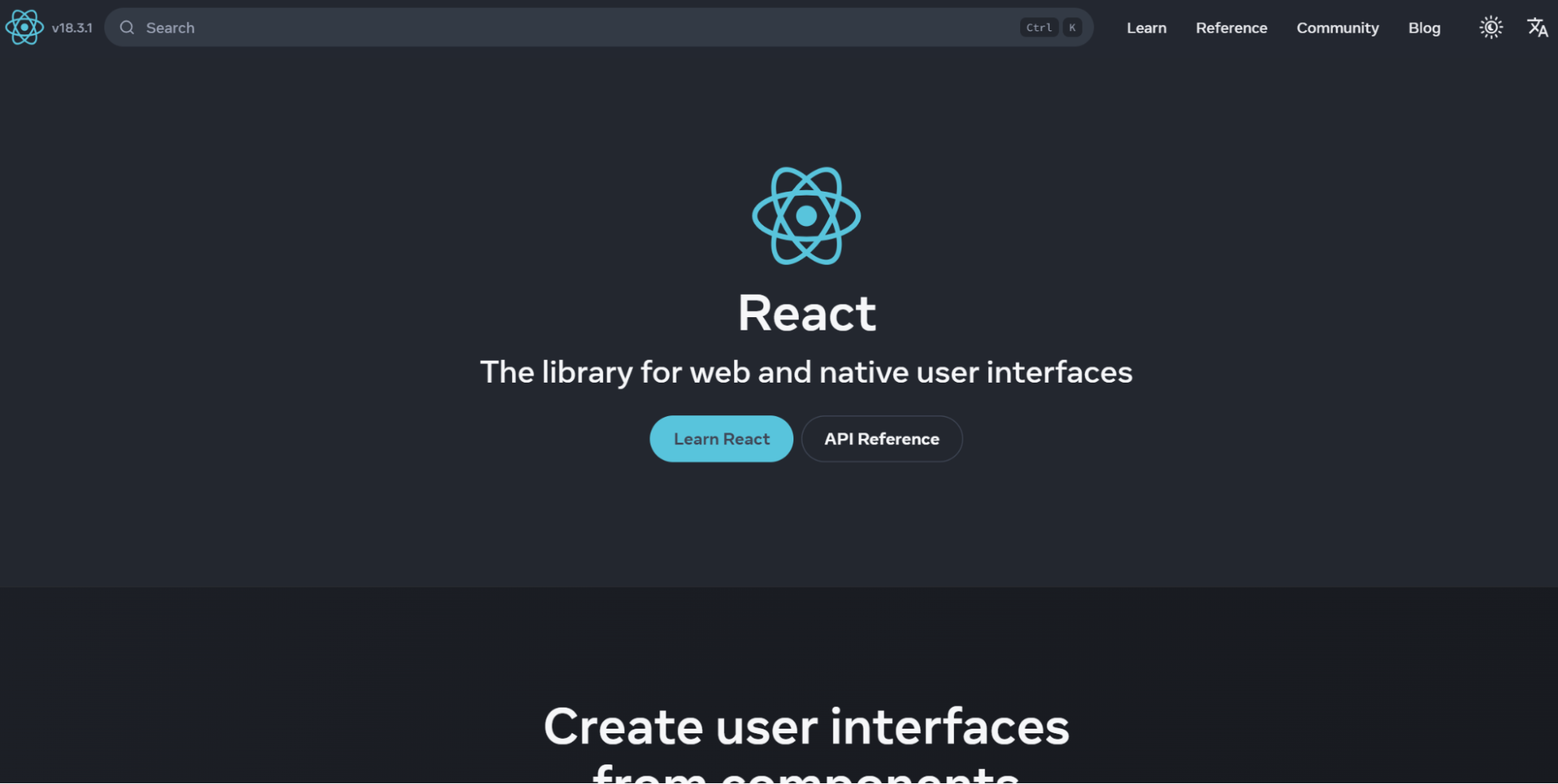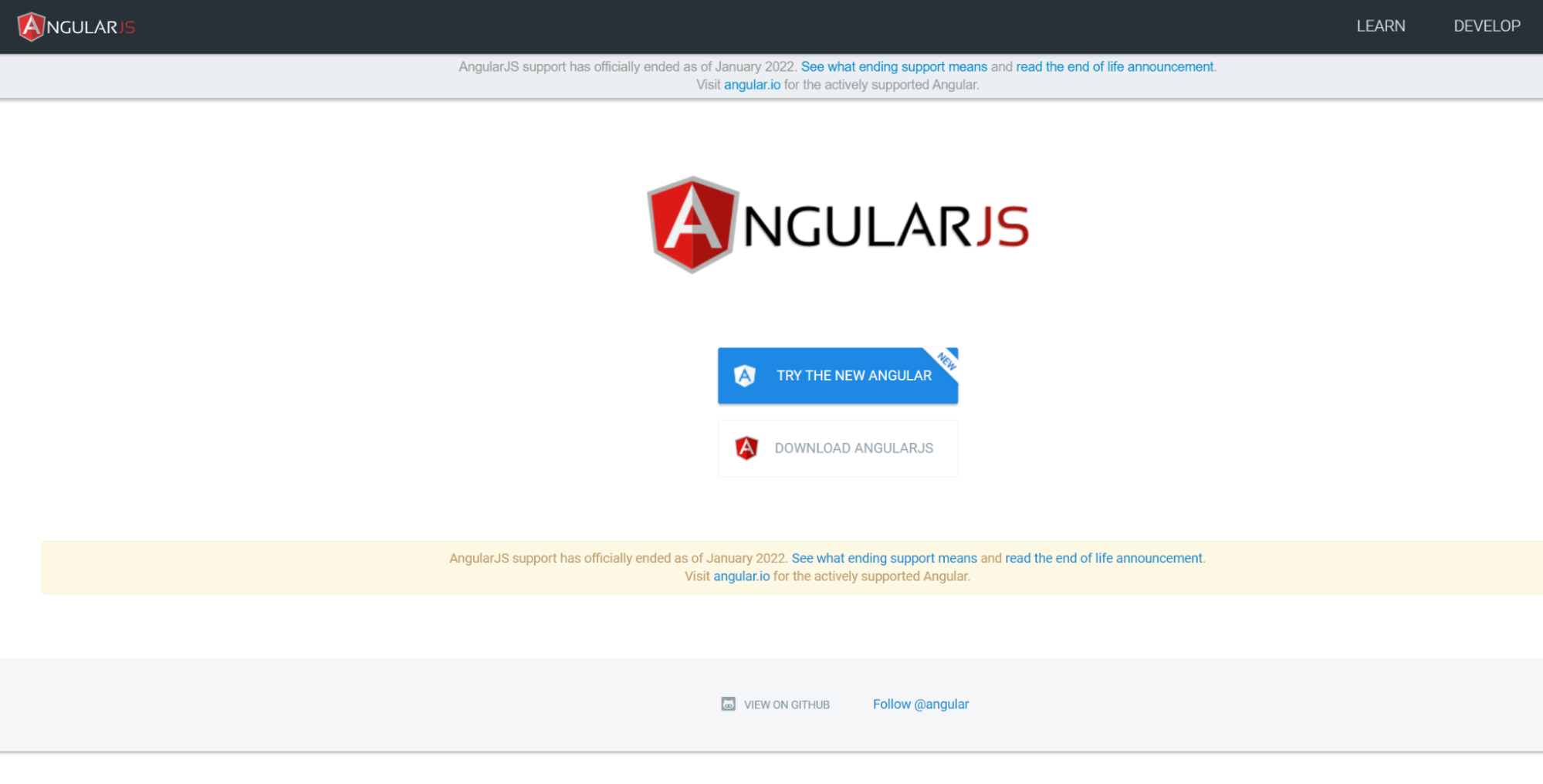Difference Between AngularJS And ReactJS
The AngularJS and ReactJS frameworks are among the most popular JavaScript frameworks. Developers worldwide use them to build rich, dynamic web applications. Each framework has its own advantages. Different frameworks are chosen based on the development needs. This is why understanding their differences is important before starting a project.
A JavaScript web framework is crucial for developing user experiences. It also enhances the development process. The differences between AngularJS and ReactJS help developers maximize their applications. In this blog, we will examine the design differences between AngularJS and ReactJS. We will start by outlining the benefits of these frameworks.
Next, we will look at their data binding, design, and performance. Finally, this comparison will guide you in deciding when and why each framework should be used. Let’s begin.
What Is React JS?
ReactJS is a library developed in 2013 by the Facebook team. It is available as open-source. It enables developers to create dynamic, interactive web pages. React is well-suited for single-page applications with frequently changing content. The entire page doesn’t need reloading, only the necessary sections update. This makes React swift and highly efficient.
One key aspect of React JS is its components. These are self-contained, reusable pieces of code. They are used to build user interfaces. Components can be buttons, form elements, or sections of a web page. Combining components creates complex user interfaces. This reduces development time and keeps the code organized and easier to manage.
Another important feature is the Virtual DOM. React JS doesn’t use the actual DOM (Document Object Model). Instead, it uses a virtual copy. When changes occur, React updates the virtual DOM first. Then, it compares the virtual DOM with the real one. It only updates the parts that changed, improving performance.
React JS also supports server-side rendering. This means parts of the page are already rendered on the server before reaching the client’s browser. It improves page loading speed and overall performance. This feature, along with others, has made React JS one of the most efficient tools in web development today.
For those new to React JS, it is easy to learn. Its interface structure is made up of components. It is designed for performance, making it suitable for both small and large projects.

What Are The Key Features Of React JS?
Here are the best key features of React JS:

Easily Use Third-Party Libraries
React JS makes it easy to integrate third-party libraries. Features like animations or charts can be added with minimal effort. Most libraries work well with React’s components. This saves time and helps your application grow.
Reusable Components
React JS uses a component-based architecture. Instead of creating the same component multiple times, create it once and reuse it throughout the application. For example, a button or form element can be a component. You can use that component in many places without rewriting code. This saves time, keeps the code cleaner, and ensures consistency across the app.
JSX for Simplicity
React JS uses JSX, which is short for JavaScript XML. It resembles HTML but works within JavaScript. JSX makes writing and integrating UI code easier. If you are familiar with HTML, structuring an interface will not be a problem. JSX helps with designing interfaces by allowing developers to write UI and logic in the same module.
Building Rich User Interfaces
React JS provides tools to improve the quality of user interface design. Components can react instantly to user actions, improving the interface. This is perfect for modern web applications where users expect a seamless experience.
Virtual DOM for Fast Rendering
React JS is equipped with a Virtual DOM to enhance performance. It doesn’t replace the entire page. Instead, it modifies only what needs to be changed. This makes rendering more efficient. As a result, the performance of applications, especially those with many UI components, improves.
One-Way Data Binding
With React JS, data flows in one direction. This one-way data binding makes the code more predictable. It becomes easier to troubleshoot. Whenever data changes, React updates the view. This gives developers more control and stability in larger applications.
Faster Development Workflow
React JS speeds up development by using repetitive components and the Virtual DOM. Apps can be built and modified even after a significant time gap. This allows teams to move faster. The code remains manageable as the project scales.
What is Angular?
Angular is a JavaScript framework owned by Google. It was launched in 2010. The framework uses the Model-View-Controller (MVC) architecture.
This separates app data from the user interface and application logic. A key feature is that it allows HTML to be used as a template language. It extends HTML syntax to describe application components more easily.
AngularJS offers many developer-oriented tools. These include a Command Line Interface (CLI) that helps with creating components and testing. The command line also supports features like dependency injection and routing.
Angular is a good solution for web applications. It can scale well. While it may seem overwhelming for beginners, it provides multiple features to help develop larger, expanding projects.

Why Are The Key Features Of AngularJS?
Let’s discuss some more key features of AngularJS:
Built-in Support for AJAX, HTTP, and Observables
AngularJS provides native support for AJAX and HTTP. This allows developers to send requests and receive responses from a server without a page refresh. AJAX is used for dynamic changes. HTTP is used for server interaction.
Observables help in managing data in asynchronous situations. For example, when data is still loading or when waiting for final data. These features make AngularJS a strong choice for dynamic, real-time applications.
Strong Community Support
AngularJS has a large community of developers. This is encouraging for beginners. If you’re stuck, there are many resources available such as videos, forums, and wikis. The community keeps AngularJS updated with the latest changes. Many common problems have already been solved by other developers, saving you time.
Cross-Platform Development
AngularJS enables development across multiple platforms. Applications can run on both the web and mobile devices. It is ideal for progressive web apps (PWAs) and desktop applications. There is no need to write separate code for different devices. This reduces both time and effort.
Seamless Experience with TypeScript
AngularJS integrates well with TypeScript, which is JavaScript with types. This helps detect errors early during coding. For beginners, it makes writing code easier and reduces mistakes. It’s also helpful for large-scale projects as it improves code organization.
Templates for Fast UI Creation
AngularJS provides templates for quickly configuring user interfaces. These templates are written in HTML, making them easy for beginners to understand. While you design the app’s interface, AngularJS handles the logic. This improves the speed and quality of the application’s interface.
Easy Component Management with CLI
AngularJS includes a Command Line Interface (CLI). It helps in the development of applications with just a few simple commands. You can generate and manage components easily. The CLI also assists in testing and deploying applications. This tool is particularly helpful for beginners, as it simplifies the development process.
Optimized Speed and Performance
AngularJS focuses on speed and performance optimization. It ensures faster loading and update times. This makes your application efficient, regardless of its size.

What Are The Key Differences Between AngularJS and React JS?
Both Angular and React are very powerful. They provide a robust set of features to enhance performance. However, they have some major differences.
Do They Have Different Data Binding Methods?
AngularJS utilizes a two-way data binding method. It connects the Document Object Model (DOM) values to model data. Hence, the View changes as the data in the model changes. Also, it significantly reduces boilerplate code. You don’t have to write additional code to provide continual View and Model synchronization.
On the other hand, React JS supports one-way data binding. Therefore, any change in component data is reflected in the view. Also, any change in the UI is reflected inside the component’s logic. One-way data binding provides singular behavior for your application. It significantly minimizes complexity. Hence, it will be easier for you to debug large React apps than the ones created with Angular.
Read: 5 Proven Ways For Creating A React Application
Do They Have Different Architectures?
AngularJS is based on the MVVM (Model-View-View-Model). Here, everything starts with a component. The structure consists of the Component, Properties, and Template. The Component defines and exposes properties to which the template can bind. It serves the role of ViewModel. The Properties are defined on the component. Thus, they become accessible to the template. They serve the role of the Model. The template binds to the component properties. It serves the role of View.
On the other hand, React JS is based on Virtual DOM. Similar to AngularJS, everything starts with a component. However, its structure is different. It is comprised of Actions, State, and JSX. They serve the roles of Controller, Model, and View. Actions are JavaScript functions that react to the user interactions originating mainly from the JSX. State gets dispatched by the Action. And JSX binds to the state received from the action.
Which One Delivers Better Performance?
Both AngularJS and React JS deliver similar performance in terms of loading and rendering. The loading and rendering times of AngularJS are 10 ms and 3 ms respectively.
For React JS, the times are 7 ms and 6 ms. However, React JS has the upper hand due to the use of Virtual DOMs.
AngularJS uses a traditional DOM. Here, the DOM tree finds and updates every node interested in an event. It is a computationally heavy process. It requires analyzing and updating an entire tree structure at every change of state. As a result, you will face performance issues on apps having a large number of UI elements.
On the other hand, React JS uses Virtual DOMs. Here, the DOM doesn’t need to be updated at every instant the application state changes. Instead, it utilizes a Virtual Tree for making the DOM look like a new state. There is no need to recreate all of the DOM nodes. As a result, you get several key advantages, including a faster DOM update process and more dynamic data binding.
Read: 15 Best React Frameworks In 2022
Do They Support Dependency Injection?
Dependency injection refers to the technique of making a class independent of its dependencies. It is available on AngularJS. Hence, the framework can automatically find the appropriate injected objects.
Here is an example of dependency injection in Angular:
import { Injectable } from '@angular/core';
@Injectable({
provided: 'root',
})
export class HeroService {
constructor() { }
}However, React JS does not entirely support dependency injection. It has a global state for all the components. As a result, it does not comply with data immutability and the concept of functional programming. Nonetheless, you can use dependency injection on React JS by using different instrument modules, including Browserify and RequireJS.
Here is an example of dependency injection in React:
const name = 'Josh Perez';
const element = < h1>Hello, {name}< / h1>;
ReactDOM.render(
element,
document.getElementById('root')
);
Do They Support Directives?
Directives in AngularJS are your application’s template logic. They are written as attributes or tags. You use them to organize the code around the DOM.
AngularJS has many standard directives, like ng-bind or ng-app. Also, it lets you create your own directives.
On the other hand, React JS doesn’t support any division for directives. However, it has many libraries for managing data flow such as Flux, Redux, Mobx, ReactN, and React-hooks. Therefore, it is much easier to build component trees on React.
Comparison Table
| Angular | React | |
| Release Year | 2009 | 2013 |
| Suitable For | Creating interactive web applications | Building large web applications with data that frequently varies |
| DOM Type | Traditional DOM | Virtual DOM |
| Data Binding | Bidirectional data binding | Unidirectional data binding |
| Learning Curve | Steep learning curve. Demands a good knowledge of different languages and concepts like pipes & templates. | Easy learning curve. Demands basic knowledge of JavaScript, ES6, and NPM. |
| Model | MVVM (Model-View-View-Model). | Virtual DOM |
| Performance | Traditional DOM can cause potential performance issues on apps with a large number of UI elements | Virtual DOM delivers significantly faster performance |
What Are The Advantages?
Let’s discuss the advantages of both frameworks:
Advantages Of Angular
AngularJS offers several major benefits.
- For instance, it provides clean code development.
- Also, it can take care of the routing.
- Besides, AngularJS provides seamless updates with CLI.
- It automatically updates all the related packages, including HTTP and Angular material. Hence, you will not face any compatibility issues.
Read: What Is An Angular Material Component, And Why Does It Matter?
Advantages Of React
React JS provides a wealth of benefits.
- For example, it is very easy to learn. Hence, you can quickly pick it up and start developing amazing web apps.
- Also, React JS provides enhanced support for server-side rendering. As a result, it has become a great choice for building content-focused applications.
- Besides, React JS is highly scalable. When you combine it with ES6, your app can manage heavy loading with ease.
React JS vs Angular: When to Choose What?
Now is the Time to Discuss Favorable Parameters for Choosing Between Angular and React
When to Choose Angular
Enterprise Application
Choose Angular if you’re building a feature-rich, enterprise-grade application. It offers high scalability and maintainability.
App Complexity
Angular is ideal for applications with low to medium complexity. It simplifies management and development.
Ready-Made Solutions
Angular provides built-in tools and libraries. It enhances productivity and streamlines the development process.
Developer Skill Set
If your team knows C#, Java, or Angular, it’s a good fit. Their existing skills will be well-utilized.
When to Choose React
Web Technology Expertise
React is best when developers have strong knowledge of HTML, CSS, and JavaScript. It allows them to work effectively.
Customization Needs
If you need a highly customized application, React offers flexibility. Its component-based structure makes tailoring solutions easy.
Event-Driven Apps
Choose React for apps with many user events. It handles state and events efficiently.
Reusable Components
React is great for apps that need reusable elements. Its modular components simplify sharing and maintenance.
Angular or React – Which is Better?
Both Angular and React are highly popular front-end technologies in the developer community. Each offers unique benefits. However, React often performs better than Angular in certain areas. A large, active community also supports React, providing helpful tools and resources.
React’s strength comes from its use of the Virtual DOM. This feature optimizes performance by improving rendering speed. It makes React faster than Angular in many cases. React also simplifies version upgrades. Developers can migrate between versions easily without complications. Additionally, React’s installation process is quick and simple, unlike Angular’s more complex setup.
React offers many advantages. It improves development speed and reduces errors with its robust solutions.
When choosing between React and Angular, consider your specific project needs. Think about how you will use the framework and the required features. If you need professional JavaScript development services, don’t hesitate to reach out to us for expert help.
What Are Angular JS Use Cases?
AngularJS can parallelly run the components to save lines of code. Hence, it can optimize your development efforts. That’s why world-class companies around the world use the front-end framework.
Some of the use cases for Angular are as follows:
PayPal
PayPal is one of the world’s largest and most commonly used payment gateways. Their checkout system with critical features like payment review page and credit card adding pages was built with Angular. Smooth functionalities and high-level security concerns are the primary requirements of these features.
Upwork
The number one freelancer platform, with more than 10 million freelancers, uses Angular to support its highly functional platform and smoothly maintain its functionalities.
Microsoft
Another big name for using AngularJS is Microsoft. The framework enabled the tech giant to bring all the features of MS Office together into a single-page view online.
What Are React JS Use Cases?
On the other hand, React JS has state containers like Redux. It facilitates faster development in scalable applications. Also, it helps apps deliver super-fast performance. Use cases for React JS are as follows:
Netflix
This world-class media streaming platform uses React JS, especially for low-performance devices. It uses the React JS library to improve its runtime performance and modularization, and increase startup speed.
The founder of React JS, Facebook, has been using the framework for a long time. It provides a high-speed rendering for millions of users worldwide. Also, it allows different contents on the page to refresh instantly according to user actions.
Does Sencha Ext JS Support AngularJS and React JS?
Sencha Ext JS supports React and Angular through integration tools and libraries, allowing developers to use Ext JS components within these frameworks:
- For React: Ext JS offers ReExt, which enables seamless integration of Ext JS components into React applications. ReExt is a tool that includes over 140 pre-built UI components and features that can be used natively within React.
- For Angular: Sencha provides the ExtWebComponents package, which allows Ext JS components to be used in Angular applications. ExtWebComponents exports Ext JS components as web components, making them compatible with various frameworks, including Angular.
Using these integrations, developers can leverage Ext JS’s powerful UI components within both React and Angular environments, enabling them to build robust, modern web applications while using Ext JS’s UI toolkit.
FAQs
1. What is the main difference between AngularJS and ReactJS?
AngularJS is a full framework for dynamic web applications. ReactJS is a library for building user interfaces. React allows the building of applications using components. AngularJS follows the MVC (Model-View-Controller) pattern.
2. Which is better for large-scale applications, AngularJS or ReactJS?
Both work well for big projects. AngularJS is great for complex forms due to features like two-way data binding and dependency injection. React is best for simpler applications. It can handle larger interfaces without added complexity.
3. How do AngularJS and ReactJS perform data binding?
AngularJS uses two-way data binding. Changes in the interface update the data model, and vice versa. React uses one-way data binding. The state triggers the change until rendering, giving developers more control.
4. Which has better performance, AngularJS or ReactJS?
ReactJS generally performs better. It uses a virtual DOM that only changes the affected parts. AngularJS’s two-way data binding can slow down larger applications, as it monitors all data changes.
5. Is ReactJS easier to learn than AngularJS?
Yes, ReactJS is easier. It focuses on creating simple, reusable UI components. AngularJS covers more aspects and concepts, making it harder for beginners.

React is perhaps the most widely used web app-building framework right now. Many developers also…

React’s everywhere. If you’ve built a web app lately, chances are you’ve already used it.…

Join 5,000+ developers at the most anticipated virtual JavaScript event of the year — August…










